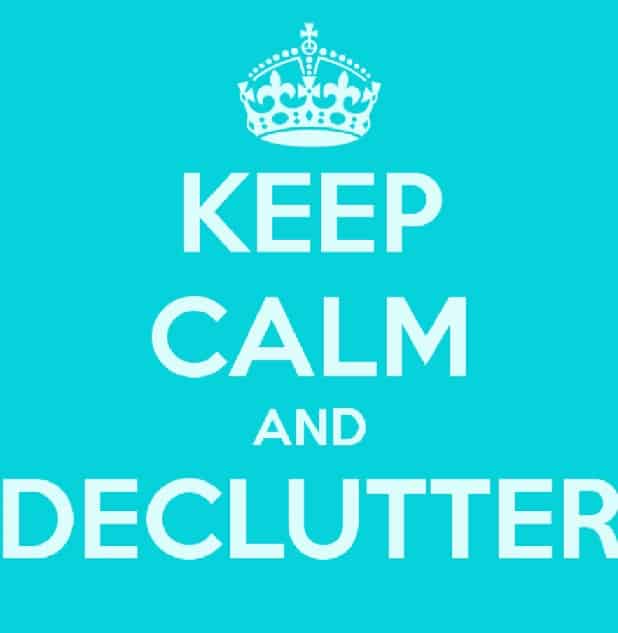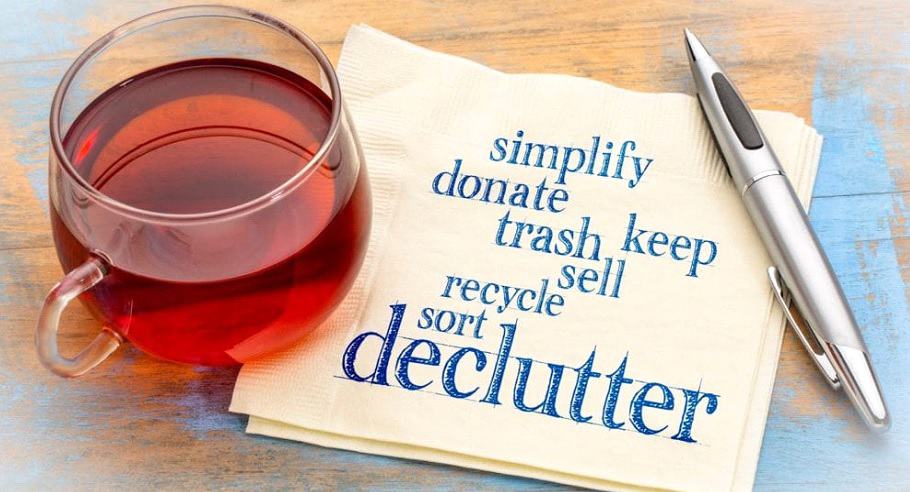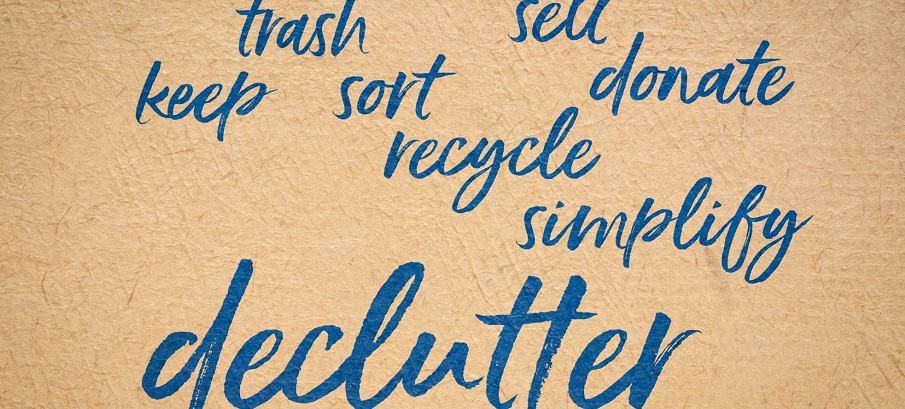
Decluttering, which is getting rid of clutter, is a part of the home organizing process. It is a topic that many people do not understand fully, but they usually get that it is not always an easy process. Most of us struggle with getting rid of things but realize the serenity and harmony a clutter-free space provides. As a professional home organizer, I have closely guided many individuals through the process of reducing clutter, and I can confidently say that no one has ever missed their useless items in the end. Instead, they wondered how they could not perform the task of downsizing piles of unwanted belongings before I arrived.

When I first started the business, I remember that my most significant objective was to help people get rid of things. It was clear that to organize a home successfully, the client needed to let go of useless items, or the projects would not get done to their fullest potential.
Through client experiences, I have learned that purging unwanted or useless household belongings is problematic because, most often, a homeowner is unaware of why they cannot part with belongings. Often, clients will come up with generic reasons for holding onto possessions. The most common excuses I hear are that people convince themselves that they will use their items again, or keep things for others to use.
I recommend giving yourself ample time toward parting with household belongings since it is the hardest part of the organizing process. It may be wise to declutter without involving other organizational tasks such as sorting or arranging items.
It is far easier to keep something than go through the imagined painstaking thought processes involved in letting go since parting with anything in life is associated with some degree of painful feelings. The problem with this topic is that there are usually underlining reasons why we hold onto things, and these reasons vary from person to person.
For this reason, I will handle this topic by covering general strategies that are most popular and proven to benefit the majority.

Decluttering Tip Number 1
Do not make paring down household items a bigger deal than it needs to be. It is necessary to break down the process into small projects to eliminate overwhelming feelings. A good rule to follow would be to only work on a given group of articles at a time. For example, clear off the kitchen counters on a given day, and perform a refrigerator cleanse another time.
I sort for my clients and family then present like groups of belongings for them to downsize. For example, I ask my children to go through all their shorts that I laid out on their bed. Focused operations such as this prove to be successful.
Decluttering Tip Number 2
Another easy decluttering trick that takes little effort is to keep a bag in your clothing, linen, kitchen, and bathroom closet or pantry and toss things you do not need or want anymore throughout the day. You can also place items that require repair to promote action. When the bags are full or every month, go through them and decide which items to recycle, discard, repair, or donate.
One of my favorite strategies for downsizing household items is a smart cardboard box trick. Fill a cardboard box with a particular group of cooking utensils, face creams, spices, shampoos, ties, colognes, etcetera. Use a separate box for each household inventory. Leave the box on a counter and write a date on the outside. Then remove the items you use and return them to where you usually store them. Wait a month or two, and then consider donating or recycling the remaining articles. There is no better way to determine an item’s usefulness.
Decluttering Tip Number 3
Start by getting rid of easy to remove articles that require little thought, such as broken, worn, or outdated items that you are confident about not keeping. Doing so will build a decisive mindest necessary for effective purging.
Decluttering Tip Number 4
I encourage you to try this bag trick. Use two kitchen-sized trash bags, and once a week, pick a particular day to go through your home, room-by-room. Start filling the bags with unnecessary items, one for donation or recycling and the other for discarding things.

Decluttering Tip Number 5
Establish a set limit on how much to keep per specific group of belongings; these boundaries are necessary for space efficiency purposes. Often, writing down your inventory amounts to use as a reference while purging is a great tool to keep you focused. In the end, you will keep the top items included in a given household inventory.
Decluttering Tip Number 6
The top two household belongings that people tend to overlook downsizing are expensive and sentimental items. Often these articles hog too much space, and much is not meaningful or holds less value than expected. In many cases, guilt is commonly the culprit that binds you to these items. We feel guilty about getting rid of things that cost a lot of money and parting with family heirlooms.
There is never a right moment to go through boxes of keepsakes or decide to sell the Waterford crystal. I would advise tackling these items one-by-one over time and do not wait for moving day. Doing so will offer the opportunity to sell while holding out for a top dollar or find the best home for your grandmother’s china.
Sentimental items bestowed to us from our family need a closer look. When these items have not left their boxes for a decade, consider a new home. Maybe, you do not want to display your grandfather’s beer stein collection, and you don’t drink beer. Think about who in the family will cherish these items and reach out to them.
Sometimes, all that is required is to reduce, especially in the case of collections. Our children’s drawings, beer can, or a doll collection may need only a downsize.
Selling anything, such as an antique cuckoo clock, takes time. We must research the value of things and find the best sales platform. Additionally, the sales process may require setting up a resale account online, learning the ropes, or making appointments with dealers. If you do not take the time to research this sales process, you can risk a flawed sales transaction, not in your favor.
Decluttering Tip Number 7
Consider paring down to one of each type of small appliance or any gadget. Commonly, we tend to hold onto electronics and appliances even when we upgrade them because we think they have value or that we may use it again should the new one break. Sometimes, we feel guilty about getting rid of something that is in good working order.
These items get tossed in closets, base cabinets, and storage rooms where they never receive use again because, after all, we replaced them for a reason. There is no greater space hog in a house other than a small appliance.
The main problem with holding onto anything with an electric cord attached is the likelihood it will plummet in value when new technology comes along. The older it becomes, product failure increases and parts get hard to find, or their repairs are unfeasible. Most used appliances have little value and are only donation or garage sale items.
Decluttering Tip Number 8
Similar to the concept of duplicated appliances, we also keep decorative items after we remodel because there isn’t anything wrong with them other than they are out-of-style. Old rugs, bed skirts, curtains, lamps, etcetera, find their way to over-crowded linen and storage closets. It is best to donate or give these items away right after you remodel because someone else can receive their use.
People redecorate when they get tired of a color, pattern, etcetera, or keep up with what is trending in home fashion. Decorating is an expensive, time-consuming venture. Given all these factors, it seems silly to think that you would revert to the old decor after replacing everything. Additionally, most home decor, especially linens, have little to no resale value and mostly are items to donate.
Getting rid of our belongings can be a stressful process; however, in most cases, people forget all about their clutter once it leaves their home for good. Most people like their homes to be a place of peace and harmony. Useless belongings or clutter will keep you from obtaining a tranquil environment in your home. Space is more valuable psychologically than any object.
